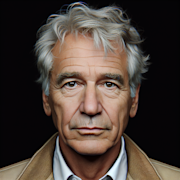The Classic Movies That Revolutionized Sound on the Silver Screen

Movies have come a long way since the silent film era. Once sound was introduced to the silver screen, it forever changed the way we experience movies. Some classic movies, in particular, revolutionized sound in the film industry, pushing the boundaries of what was previously thought possible. In this blog post, we will explore these groundbreaking movies and their impact on the world of cinema.
1. The Jazz Singer (1927) - The Birth of the “Talkie”
Ask any film buff about movies that revolutionized sound, and The Jazz Singer is likely to be the first one mentioned. Released in 1927, this film marked a significant milestone in cinematic history as the first feature-length motion picture with synchronized dialogue sequences. Al Jolson’s iconic line, “You ain’t heard nothing yet!” inaugurated a new era of talking pictures, forever changing the landscape of the film industry.
The Jazz Singer effectively ended the silent film era and paved the way for sound in films. Its success led to the rapid development of sound-on-film technology, inspiring filmmakers to explore new storytelling opportunities with the addition of synchronized sound.
2. King Kong (1933) - Creating Immersive Audio
While King Kong is primarily remembered for its groundbreaking visual effects, the film also made a significant impact on the use of sound in movies. Released in 1933, this classic monster movie featured a dynamic and immersive audio experience that enhanced the viewers’ emotional engagement.
King Kong pioneered the concept of using sound effects to heighten suspense and create a sense of realism. From the roars of the gigantic ape to the ambient sounds of Skull Island, the movie showcased the power of sound in storytelling. This film’s innovative sound design laid the groundwork for future filmmakers, emphasizing the importance of audio in complementing the visual elements on screen.
3. Citizen Kane (1941) - Mastering Sound Mixing
Considered one of the greatest films ever made, Citizen Kane showcased mastery in sound mixing and revolutionized the way audio was presented in movies. Directed by Orson Welles, this 1941 masterpiece featured groundbreaking sound techniques that greatly contributed to its storytelling brilliance.
Citizen Kane introduced innovative narrative techniques, such as overlapping dialogue, where multiple conversations occur simultaneously. This naturalistic approach to sound mixing created a more realistic representation of conversations and further deepened the film’s immersive experience.
Additionally, the film’s use of deep focus photography – where both foreground and background subjects are in sharp focus simultaneously – was complemented by its meticulous sound design. The ability to clearly hear what was happening in the foreground versus the background allowed for a more dynamic visual and auditory experience.
4. Star Wars (1977) - Pushing the Boundaries of Sound
One cannot talk about movies that revolutionized sound without mentioning Star Wars. George Lucas’s space opera epic, released in 1977, pushed the boundaries of sound design and forever changed the way audiences experience cinematic soundscapes.
Star Wars introduced revolutionary advancements in sound effects, creating iconic sounds that have become embedded in popular culture. The roar of the lightsaber, the beeps and boops of R2-D2, and the immersive space battles all contributed to a completely new sonic experience for moviegoers.
Ben Burtt, the sound designer for Star Wars, pioneered the concept of sound “worldizing” – capturing and manipulating environmental sounds to create a more believable and rich auditory experience. This technique, along with the use of advanced sound editing and mixing, set a new standard in sound design that continues to influence filmmakers today.
5. Jurassic Park (1993) - Realistic Sound Effects
Jurassic Park was not only a groundbreaking achievement in visual effects but also a game-changer in sound design. Directed by Steven Spielberg and released in 1993, this film demonstrated the power of realistic sound effects in immersing the audience in a fictional world.
The sound team for Jurassic Park faced the challenge of creating believable dinosaur sounds since nobody truly knew what they sounded like. By creatively combining various animal noises, they managed to bring these long-extinct creatures to life on screen. The iconic T-Rex roar, created by blending the sounds of a baby elephant, an alligator, and a tiger, demonstrated the immense impact sound could have in making extraordinary visuals feel tangibly real.
Jurassic Park showcased the importance of sound design in enhancing the emotional impact of a film. By meticulously crafting distinctive sounds for each dinosaur, the audience was able to form a deeper connection with the prehistoric creatures, suspending disbelief and creating a truly immersive experience.
Conclusion
The classic movies mentioned above each revolutionized sound in their own unique way, leaving an indelible mark on the world of cinema. Whether it was the birth of synchronized dialogue in The Jazz Singer, the immersive audio experience of King Kong, or the advancements in sound design pioneered by Star Wars and Jurassic Park, these films pushed the boundaries of what was previously thought achievable in sound on the silver screen.
Today, we continue to see the influence of these movies in modern filmmaking, with sound design playing a crucial role in enriching cinematic storytelling. As advancements in technology continue to provide possibilities for further innovation, we eagerly await the next revolutionary film that will redefine the way we experience sound in movies.

Desmond van der Walt
Journalist
More From Classics Authority Movies

Movie
Rear Window (1954)

Movie
The Evolution of Classic Animation: From Hand-Drawn to CGI

Movie
Heroes and Villains: Exploring the Complex Characters of Classic Cinema

Movie
All Quiet on the Western Front (1930)

Movie
Breakfast at Tiffanys: The Timeless Appeal of Audrey Hepburn

Movie
The Silent Revolution: Rediscovering the Magic of Silent Cinema





